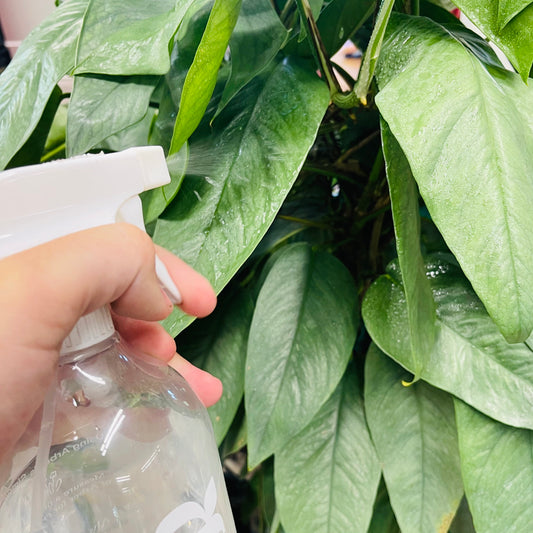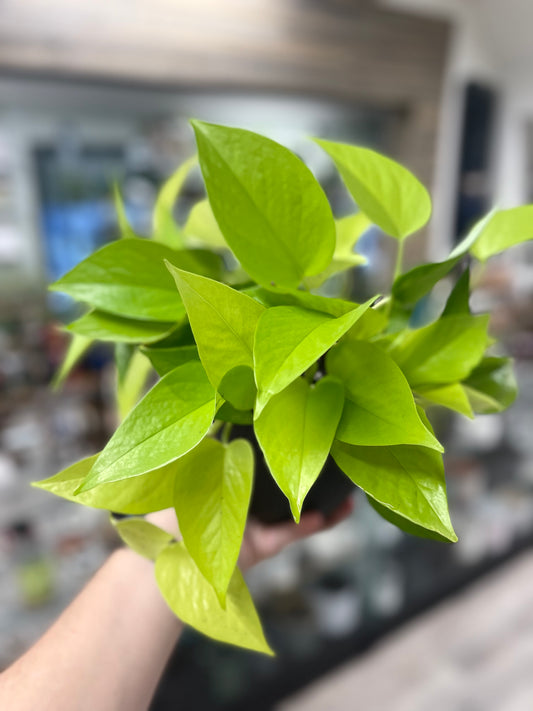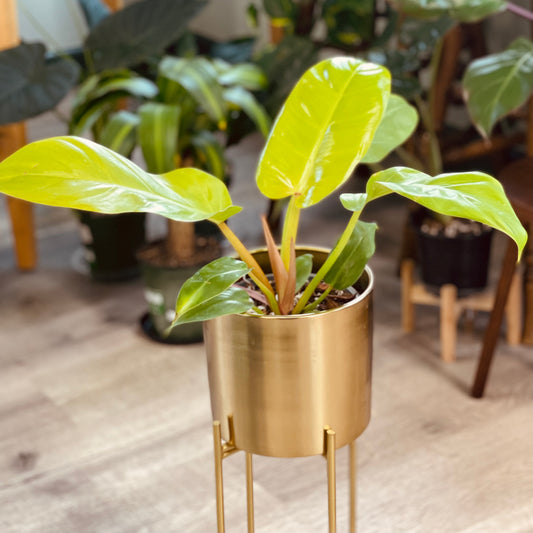Fungus gnats are a common pest found in houseplants. They belong to the scientific classification of Sciaridae, and are small, dark-colored flies that measure about 1/8 inch in length. These pests are attracted to moist soil and can cause damage to the roots and lower stem of the plant.

How To Detect: Fungus gnats can be difficult to detect as they are small and often move quickly. However, one of the most obvious signs of an infestation is the presence of small, dark flies near the soil surface of the plant. Other symptoms include yellowing leaves, wilting, and slow growth. To detect an infestation, you can check the soil surface for small flies, or place a yellow sticky trap near the plant. If left untreated, fungus gnats can cause serious damage to the plant, resulting in stunted growth and even death.

How To Treat: There are several options for treating a houseplant infested with fungus gnats. One safe organic option is to use neem oil, which is a natural insecticide that can be used on plants. Another less invasive option is to use diatomaceous earth, which is a powder made from crushed fossils that can be sprinkled on the soil surface. Chemical options include insecticidal soap and pyrethrin, which are both effective in controlling fungus gnats. However, it is important to follow the instructions on the label and use these products carefully to avoid damage to the plant.
Another option is to use nematodes. Nematodes are tiny, worm-like microorganisms that can be found in soil. Two species of nematodes, Steinernema feltiae, and Heterorhabditis bacteriophora are known to feed on fungus gnat larvae. These nematodes can be purchased and applied to the soil surface of infested plants. They burrow into the soil and infect the fungus gnat larvae, killing them within a few days.

How To Prevent: Preventing an infestation of fungus gnats is the best way to protect your houseplants. One of the most effective prevention methods is to allow the soil to dry out between watering. Fungus gnats are attracted to moist soil, so by allowing the soil to dry out, you can make the environment less hospitable for these pests. Another prevention method is to use a coarse soil mix that drains well. Additionally, keep your houseplants away from damp areas in your home, such as near sinks or in bathrooms.




![Dracaena marginata (16" Plastic Pot) [ID #47618480]](http://zenrockford.com/cdn/shop/files/image_992491d2-6277-4893-842f-11e2983f137e.jpg?v=1725732294&width=533)
![Philodendron Florida Bronze (10" Nursery Pot) [ID #29432345]](http://zenrockford.com/cdn/shop/files/image_a67d0fb6-348e-4829-a7eb-64ce015a3b39.jpg?v=1725643115&width=533)
![Aglaonema Manilla's Pride (3" Plastic Pot) [ID #33051624]](http://zenrockford.com/cdn/shop/files/image_1fb45f38-7b6b-412c-aa29-ed2df326d106.jpg?v=1753291075&width=533)
![Scindapsus Silver Lady (8" Clay Pot w/ Moss Pole) [ID #47128926]](http://zenrockford.com/cdn/shop/files/image_f5c79dcd-5dd4-4ba3-9cf7-f49da779e5ea.jpg?v=1726510803&width=533)